
St. Cloud State University
theRepository at St. Cloud State
Culminating Projects in English Department of English
12-2017
Use of English Articles by Korean Students
Minhui Choi
St. Cloud State University
Follow this and additional works at: h6ps://repository.stcloudstate.edu/engl_etds
5is 5esis is brought to you for free and open access by the Department of English at theRepository at St. Cloud State. It has been accepted for
inclusion in Culminating Projects in English by an authorized administrator of theRepository at St. Cloud State. For more information, please contact
rswexelbaum@stcloudstate.edu.
Recommended Citation
Choi, Minhui, "Use of English Articles by Korean Students" (2017). Culminating Projects in English. 109.
h6ps://repository.stcloudstate.edu/engl_etds/109

1
Use of English Articles by Korean Students
by
Minhui Choi
A Thesis
Submitted to the Graduate Faculty of
St. Cloud State University
in Partial Fulfillment of the Requirements
for the Degree of
Master of Arts in
Teaching English as a Second Language
December 2017
Thesis Committee:
John Madden, Chairperson
James Robinson
Kyounghee Seo
2
Abstract
Correct use of English articles is a challenge for many English learners. English learners
of various native language backgrounds make frequent mistakes when it comes to choosing
appropriate articles to denote definiteness in English. Korean language falls into a language
group that lacks an overt article system, which causes many Korean English learners to struggle
with English articles. This study investigates the use of English articles by Korean students who
are studying in an American college using English as a second language. An oral translation task
of a Korean story into English, which involved voice recording, transcribing those recordings
and then calculating each English article use, was employed to examine thirty-five Korean
participants’ English article use. The results demonstrate a few features in Korean students’
article use:
(1) Korean learners follow the accuracy pattern of the → a/an → zero article in descending order
of proficiency; (2) no significant statistical evidence was found between the accuracy of article
use and length of stay in English speaking counties; (3) Korean students presented comparatively
more accurate article use in definite contexts than in indefinite contexts suggesting that correct
article use in indefinite contexts is more problematic for them compared to definite contexts; and
(4) when they make mistakes, subjects misused the more than zero article in indefinite contexts
where a/an I s required, while misusing zero article more than a/an in definite contexts where
the is required. Both in definite and indefinite contexts, participants used the the most and a/an
the least.
3
Acknowledgements
I’d like to express my sincere gratitude to all the Korean students who sacrificed their
time and energy to participate in my project, which was very challenging to them. Without their
contribution, this research would not have been possible. I am also deeply grateful for my thesis
committee members: Dr. John Madden, my thesis advisor, for his patience, systematic
instructions, and insightful comments throughout this research; Dr. James Robinson for his
guidance and encouragement as my academic advisor; and Dr. Kyounghee Seo for introducing
me to these wonderful graduate programs at St Cloud State University and for her continuous
support. Finally, I would like to thank my family in Korea for their long-distance loving support
and my husband and best friend, Benjamin Lambertson, for his limitless support and
encouragement throughout my graduate study.
4
Table of Contents
Page
List of Tables ................................................................................................................... 6
List of Figures .................................................................................................................. 7
Chapter
1. Introduction .......................................................................................................... 8
2. Literature Review................................................................................................. 10
English Articles .............................................................................................. 10
Korean Language ........................................................................................... 14
Different Perspectives on the Role of Native Languages in SLA.................. 18
Research on ESL Students’ English Article Use ........................................... 21
3. Methodology ........................................................................................................ 24
Research Questions ........................................................................................ 24
Participants ..................................................................................................... 25
Description of Data Collection Instruments .................................................. 27
Procedures ...................................................................................................... 29
Data Coding ................................................................................................... 30
Coding for TLU ............................................................................................. 32
Coding for Article Use in Definite and Indefinite Contexts .......................... 33
4. Results and Discussions ....................................................................................... 36
Different Transcripts in Various Lengths ...................................................... 36
TLU Scores, Order of Accuracy, and Length of Stay
in English Speaking Countries ................................................................. 38
5
Chapter Page
Article Use in Definite and Indefinite Contexts ............................................ 44
5. Conclusions and Pedagogical Implications ......................................................... 51
Limitations and Further Research .................................................................. 54
References ........................................................................................................................ 56
Appendices
A. The “Gold Ax and Silver Ax” Folk Tale ................................................................ 59
B. English Version of the Folk Tale ............................................................................ 61
C. Background Questionnaire...................................................................................... 63
6
List of Tables
Table Page
1. Article-grouping by Definiteness (English) ........................................................ 12
2. Article-grouping by Specificity (Samoan) ........................................................... 13
3. Hierarchy of Difficulty ........................................................................................ 19
4. Characteristics of Participants.............................................................................. 25
5. Subject #1 TLU Scores ........................................................................................ 33
6. Word Counts and TLU Scores for Three Selected Subjects ................................ 37
7. TLU Scores of Three Groups ............................................................................... 39
8. ANOVA Test Results .......................................................................................... 42
9. Average Stay in English Speaking Countries ...................................................... 43
10. Article Use in Indefinite Context ......................................................................... 44
11. Article Use in Definite Context ........................................................................... 44
7
List of Figures
Figure Page
1. Three Groups’ TLU Scores for the, a/an, and zero article ................................. 40
2. Correct Use of a/an in Indefinite Context and the in Definite Contexts ............. 46
3. Incorrect Use of the and zero article in Indefinite Contexts ................................ 47
4. Incorrect Use of a/an and zero article in Definite Contexts ................................ 48
5. Each Article Use of Total Group in Indefinite and Definite Contexts................. 49
8
Chapter 1: Introduction
Making errors with article use is one of the most common occurrences when it comes to
learning English. For language learners whose native languages do not have articles, finding an
appropriate article to use in a certain speaking or writing context can be difficult. There is no
article system in many Asian, Slavic, and African languages (Celce-Murcia & Larsen-Freeman
1999). Even though English articles take up a small part of English grammar, they are one of the
most commonly used words in conversations. English articles are difficult to learn by many
English learners. Even a learner who has studied for a long time often struggles to choose an
appropriate article to use in conversation.
Not only is learning English articles difficult, but teaching English articles to students
whose native language does not include articles can be even more difficult. Yamada and
Matsuura (1982) stated that native English teachers found that the way students choose an article
to use does not go well with the existing English language system. Many ESL students tend to
choose an article arbitrarily. ESL learners commonly omit articles regardless of definite or
indefinite contexts, use a/an for the or vice versa and apply articles in the wrong context when
they speak English. According to Ionin, Ko, and Wexler (2004), learners sometimes misinterpret
the use of the and a/an because they apply definiteness or specificity incorrectly.
Korean falls into the group of languages where articles do not exist. Many Korean
English speakers have difficulty learning how to use English articles appropriately because it is a
new concept for them. According to Myers (1992), Korean learners often make errors in their
oral usage of English by omitting proper articles.
9
The English article functions as a marker to designate the definiteness or indefiniteness of
a noun. When the is used in front of a noun, the noun is considered definite. The can also signal
old or previously remarked information. The singular indefinite article a/an is followed by a
noun which is indefinite and can be used to indicate new information.
Some researchers divide articles into two features: definiteness and specificity.
According to Ko, Ionin, and Wexler (2009), the shared understanding between speakers and
listeners is referred to as definiteness, and the information that only the speaker knows is referred
to as specificity. Even though English article selection is decided by definiteness, Korean
English learners tend to choose an article based on specificity as well as definiteness (Ionin, Ko,
& Wexler, 2004).
Korean language has its own way to express definiteness or specificity and the people
tend to rely upon demonstratives, postpositions, and context rather than articles. Explicit
denotation of definiteness or specificity is often unnecessary because they can be imbedded into
the context of a sentence. This leads many Korean English learners to miss an article use even
when an article is necessary in English. Therefore, it is crucial to comprehend what challenges
Korean English speakers might have when they try to learn and utilize English articles.
10
Chapter 2: Literature Review
English Articles
According to Master (1996), English necessitates use of determiners for nouns, so a noun
phrase should be comprised of at least a determiner and a following noun. Articles are one of the
main determiners in the English grammar system. The English article system has three types of
articles: a/an, the and the zero article. The zero article can be symbolized as Ø. Master (1996)
stated that articles play two main roles: classification and identification. If someone talks about a
random object which belongs to a certain group, an indefinite article a/an or Ø is used. If a noun
is identified and the hearer and listener understand what the noun designates, the definite article
the is used.
Celce-Murcia and Larsen-Freeman (1999) proposed that article use essentially depends
on the context rather than the structure of a sentence. Choosing an appropriate article for a noun
heavily depends on the knowledge shared between interlocutors in conversations. Therefore, the
definite article the is used for a specific noun which is being argued between the speaker and the
listener, and indefinite articles are used for a noun whose identity is not specific to conversation
participants (Celce-Murcia & Larsen-Freeman, 1999). It is essential for ESL students to learn
getting clues from ‘pragmatic/discourse knowledge’ to use articles appropriately (Park, 2013).
When a noun is introduced to communication, indefinite articles are used since its
identity is not specific yet. However, when the speaker mentions the noun again, the speaker and
the listener understand which object the speaker is talking about. The identity of the noun is
specific now, so the definite article is used for the second mention of the noun. Celce-Murcia
and Larsen-Freeman (1999) called this “first mention → subsequent mention principle” (p. 282).
11
In most conversation situations, the use of articles is determined by context, not by sentence
structure.
In general, indefinite articles are used for nonspecific nouns and the zero articles are
employed for plural nouns. Proper nouns like names of people or locations take the zero article
with a few exceptions. Celce-Murcia and Larsen-Freeman (1999) classified the use of the into
three groups based on how a referent is located by the speaker and listener. They are “a
situational-cultural, a textual, and situational basis” (p. 279). According to Celce-Murcia and
Larsen-Freeman (1999), the situational-cultural basis includes “general cultural use (the sun, the
earth), perceptual situational use (Pass me the salt), immediate situational use (Don’t go there.
The dog will bite you), local use for general knowledge (the church, the pub), and local use for
specific knowledge (in the town of Halifax)” (p. 279). The textual use of the has the following
subsets: anaphoric use (previous reference), deductive anaphoric use (preceding reference of a
schematically-related notion) and cataphoric use (following discussion of something related)
(Celce-Murcia & Larsen-Freeman, 1999). Situational use of the contains usage with post-
modifiers (relative clauses, prepositional phrases) and usage with ranking determiners and
adjectives (the first and the next) (Celce-Murcia & Larsen-Freeman, 1999).
Articles can be decided by two parameters: definiteness and specificity. According to
Ionin et al. (2004), definiteness denotes that the speaker and the listener share the meaning of a
noun in a context, and specificity means only the speaker knows about a noun which is
mentioned. The definitions for definiteness and specificity are described by Ionin et al. (2004) as
follows:

12
1. Definiteness
If a Determiner Phrase (DP) of the form [DNP] is [+definite], then the speaker and
hearer presuppose the existence of a unique individual in the set denoted by the NP.
2. Specificity
If a Determiner Phrase (DP) of the form [D NP] is [+specific], then the speaker
intends to refer to a unique individual in the set denoted by the NP and considers this
individual to possess some noteworthy property (Ionin et al., 2004, p. 5).
English is one of the languages in which articles are selected by definiteness. English
articles are divided into two group: definite article the and indefinite article a/an. According to
Ionin et al. (2004), there is no indicator for marking specificity in the English article system.
Unlike in English, specificity is a main parameter that decides articles in Samoan language
(Ionin et al., 2008). Samoan language has articles le for specific contexts and se for non-specific
contexts but no article to express definiteness. The following tables, Table 1 and Table 2, show
the difference of the article system between English and Samoan.
Table 1
Article-grouping by Definiteness (English)
(Ionin, Zubizarreta, & Maldonado, 2008, p. 558)
context
+definite
-definite
+specific
the
a
-specific

13
Table 2
Article-grouping by Specificity (Samoan)
(Ionin et al., 2008, p. 559)
According to Ionin et al. (2004), speakers of languages that do not have articles
“fluctuate” between definiteness and specificity when choosing English articles. In Kim and
Lakshmanan’s (2009) study, Korean English learners who do not have articles in their native
language, tend to choose an article based on specificity as well as definiteness even though
English article selection is decided by definiteness (Kim & Lakshmanan, 2009).
However, English learners with articles in their native language show a different
tendency in their English article use. Researchers attribute this to positive transfer of article use
from Spanish to English. According to Schönenberger (2014), ESL learners whose native
languages have articles “transfer the parameter value from their L1 (native language) to L2
(second language) English” (p. 77).
The article systems in Spanish and German are based on definiteness as in English. In
the study of Ionin et al. (2008), English learners with a Spanish L1 background showed higher
accuracy with English article use than Russian English students who do not have an article
system in their native language. Schönenberger (2014) reported that German English learners
also did not show much difficulty using English articles, compared to Russian students. It seems
that students’ native language’s similarity to English leads to positive transfer from L1 to L2.
context
+definite
-definite
+specific
Le
-specific
Se
14
The Korean Language
It is essential to discuss some characteristics of the Korean Language system to
understand why Korean English learners make frequent errors with use of English articles.
Many languages express definiteness or indefiniteness using their own unique system such as
articles in English. Languages without a distinct article system like English still have their own
methods to denote definiteness. Schönenberger (2014) argued that in languages which do not
have an article system, definiteness is addressed by using ‘the word order,’ the morphological
case,’ ‘the aspectual system,’ ‘demonstratives,’ ‘possessives’ or ‘numerals.’
A common misunderstanding about the Korean language is that it does not have a system
expressing definiteness or even the concept of definiteness. However, nouns do not solely
depend on article systems to express definiteness. Kim (2012) insisted that Korean conveys
definiteness and indefiniteness, which is universal across languages, but which does it differently
from English. Jun (2013) also stated that the lack of an article system in the Korean language
does not mean that it cannot convey definiteness. According to Jun, it is possible to translate
English into Korean without damaging this information of definiteness.
In many cases, nouns in Korean do not have explicit determiners associated with them;
therefore, it is common to see a noun phrase that has solely a noun. Jun (2013) argued that in
Korean, “bare noun phrases” have an immense role in noun phrases because they deliver
multiple meanings. According to Jun, a bare noun (i.e.
학생
(hak-saeng)), which means student
in English, can deliver four different meanings, such as “a student, the student, students and the
students” (p. 2).

15
According to Ellis (1997), Interlingual/intralingual transfer occurs when someone’s
native language does not have a certain feature of a target language. The Korean language does
not have an overt article system, which puzzles Korean English learners in choosing an article to
use. One might wonder how Koreans deliver the meaning of definiteness in their language. Jun
(2013) insisted that the Korean language has its own system to signal those language properties
and does not have any trouble with delivering definiteness or specificity between the speaker and
listener.
One of the common means Koreans employ to signal definiteness is using
demonstratives. Celce-Murcia and Larsen-Freeman (1999) argued that the definite article the
originated from demonstratives such as that. Koreans use a few demonstrative words to indicate
definiteness in conversations. The most frequently used demonstratives in Korean are
저
(jeo),
이
(yi) and
그
(gu). According to Kang (2012),
저
(jeo) is used when the object is far from the
speaker,
그
(gue) when the object is medial to the speaker, and
이
(yi) for the object which is near
to the speaker.
1. 나는 저 곳에 갔습니다. (I went to that place.)
Na-nun jeo gou-se Gatseumnida.
I that place-to went
2. 나는 이 곳에 갔습니다. (I went to this place.)
Na-nun yi gou-se Gatseumnida.
I this place-to went
In (1), the Korean demonstrative
저
(jeo) means English demonstrative that, and
이
(Yi)
in (2) means this in English. In Korean, demonstratives are more actively used because they do

16
not have articles. The last demonstrative to be discussed is
그
(gue), which is unique, compared
to other demonstratives.
3. 나는 그 곳에 갔습니다. (I went to that place.)
Na-nun geu gou-se Gatseumnida.
I the place-to went
In (3), the demonstrative
그
(geu) is used to express definiteness. Even though its
meaning is similar to Korean demonstrative
저
(jeo) used in (1),
그
(geu) and
저
(jeo) do not have
the same meaning. Kang (2012) argued that
그
(gue) is different from other demonstratives
because it acts like the definite article (the) in a certain context. In many cases, English article
the is translated into Korean as
그
(gue.). Therefore, some Korean English speakers tend to
overuse the when they speak English.
According to Jun (2013), as well as
이
(yi),
그
(gue), and
저
(jeo),
어떤
(eoteun) or
한
(han) can denote definiteness/specificity. The meaning of
어떤
(eoteun) or
한
(han) is close to
the English word a certain.
In many cases, Koreans get information on definiteness or indefiniteness from the context
of the conversation. According to Lee (1992), “the interpretation of nouns regarding
indefiniteness and definiteness largely depends on context in Korean” (p. 328). Jun (2013) also
stated that definiteness or specificity in Korean language can be cued from the previous
conversation and noun phrases, which if mentioned in the previous context, can be omitted
without a problem. This kind of omission is common in Korean conversations, but it does not

17
confuse communication because a lot of seemingly missing information can be inferred from the
context.
Koreans do not rely upon articles to introduce a new referent in a conversation. They
rather leave out any markers which denote definiteness or indefiniteness.
4. 누가 왔니? 아이가 왔어요. (Who came? A/the kid came)
Nuga watni? Ayi-ga watseoyo.
Who came? Kid came.
In (4), the word ayi (kid) was used without an article. In this conversation, the speaker
and the listener share the information of definiteness through the context. There is no need to
use definite or indefinite articles to deliver information in this Korean conversation because
definiteness is conferred from the context alone, unlike in English, where definite articles are
used.
One of the unique language systems in Korean is postpositions. Postpositions are added
to nouns, assigning those nouns cases such as subjects, objects, or complements. One interesting
thing about these postpositions is that they can designate definiteness to nouns. According to Jun
(2013), postpositions have a critical influence on the meaning of nouns to which they are
attached.
5. 고양이는 매우 빨라요. (Cats are very fast.)
Goyangyi-neun maewoo palayo.
Cat very fast

18
6. 고양이가 매우 빨라요. (The cat is very fast.)
Goyangyi-ga maewoo palayo.
Cat very fast
Both
는
(neun) and
가
(ga) in (5) and (6) are postpositions which assign the subject case
to the noun
고양이
Goyanyi (cat). However, the meaning of cat in (5), of which the postposition
는
(neun) is put at the end, is indefinite and it implies the generic meaning of a cat, while the
meaning of cat in (6) with the postposition
가
(ga) is definite, and refers to a specific cat that the
speaker and the listener understand together. Jun (2013) insisted that it is critical to consider
postpositions when discussing the meaning of noun phrases in Korean.
Different Perspectives on the Role of
Native Languages in SLA
The influence of native languages on second language acquisition (SLA) has been an
incessantly argued topic for a long time in the field of SLA. Even though the degrees of
influence that the native language has on second language development are considered to be
various, according to different scholars, the position of learners’ first language in second
language acquisition is regarded as being quite steadfast.
Behaviorism, which prevailed in 1950s and 1960s, is a psychological learning theory that
proposes a strong role of native language in second language acquisition. In behaviorism,
language learning is deeply associated with native languages and the influence of native
languages on second language learning is called ‘transfer’ (Gass, 2013). Gass defined ‘transfer’
as “the psychological process whereby prior learning is carried over into a new learning

19
situation” (p. 83). Transfer from learners’ first language can facilitate or hinder their second
language learning.
The Hierarchy of Difficulty suggested by Stockwell, Bowen, & Martin (1965) clearly
explains how differences between the first language and the second language impact transfer.
They categorized the differences between the first and the second languages into five groups:
differentiation, new category, absent category, coalescing, and correspondence. Differentiation
is regarded as a factor which makes language learning the most difficult and Correspondence
language learning the easiest. Gass (2013) presented the following table for the Hierarchy of
Difficulty by adapting Stockwell et al.’s (1965) theory.
Table 3
Hierarchy of Difficulty
CATEGORY
EXAMPLE
Differentiation
English L1, Italian L2: to know versus sapere/conosceres
New category
Japanese L1, English L2: article system
Absent category
English L1, Japanese L2: article system
Coalescing
Italian L1, English L2: the verb to know
Correspondence
English L1, Italian L2: plurality
(Gass, 2013, p. 90)
Table 3 shows that articles are a difficult area for Japanese learners because they do not
have articles in their native language. For Japanese, English articles are a ‘new category’ that
challenges their language development. In the same way, many language learners such as
Korean, Chinese, or Russian who lack articles in their native languages show that they have
difficulty with acquisition of English articles (Schönenberger, 2014; Ionin et al., 2004).
20
While behaviorism strongly supports the influence of native language on SLA, results
from some studies on child language acquisition throw doubts on the behavioristic view of native
language. Based on investigation on morpheme order of children’s first language acquisition, a
number of researchers have proposed that second language acquisition is similar to a child’s
native language learning.
Dulay and Burt (1974) examined two different groups of children, 60 Spanish children
and 55 Chinese children. Using Bilingual Syntax Measure (BSM), which was devised to elicit
English morphemes from participants, they found that these two groups of children, who are
from different native language background, have similar developmental acquisition patterns of
English morphemes: Pronoun case, Article (a, the), Progressive (-ing), Contractible copula (‘s),
Past irregular, Long plural (-es), Possessive (‘s), and 3
rd
person (-s). With these results, they
suggested that universal language acquisition patterns exist, and that the role of learners’ first
language is less significant in SLA (Dulay & Burt, 1974).
The universal pattern in acquisition of English morphemes was also found in a study on
adult language learners by Bailey, Madden, and Krashen (1974). They performed research on ‘a
natural sequence’ of morphemes acquisition, using the same BSM method in Dulay and Burt’s
(1974) study, with 33 native Spanish speakers and 40 native speakers of different languages.
They proposed that there was a ‘natural sequence’ in adult language acquisition regardless of
their native languages (Bailey et al., 1974).
On the other hand, even though above studies on English morpheme order diminished the
influence of native language on SLA, the role of first language is still supported by a number of
other studies. Luk and Shirai (2009) conducted morpheme studies with a variety of different

21
language groups comprised of native speakers of Korean, Japanese, Chinese, and Spanish. In
their research, only Spanish group turned out to follow the ‘natural order’ of morpheme
acquisition while other groups acquired plural-s, articles, and possessive‘s in a different order,
than the predicted natural sequence. This suggests that the learners’ native language may
influence SLA.
Research on ESL Students’ English
Article Use
Since the misuse of articles is one of the most common mistakes that language learners
make when attempting to learn English, there has been much research performed on L-2 learners
whose native language have no articles.
Yamada and Matsuura (1982) investigated article use by Japanese students using cloze-
type tasks, and found that the difficulty varied by which type of article was used. In their study,
both advanced and intermediate group performed well on using definite article the. Even though
the intermediate group showed difficulty with appropriate use of zero article, they improved as
they advanced. However, they did not show the same improvement when using indefinite
articles. Even advanced learners had difficulty using indefinite articles. Yamada and Matsuura’s
(1982) study makes it clear that language teachers should be aware that language learners may
have more difficulty using certain articles.
Zdorenko and Paradis (2008) performed a longitudinal study of 2 years on article
acquisition by children learning a second language. They studied two different groups: one
whose native languages do not have articles (Korean, Japanese, and Chinese) and the other
whose native languages do have articles (Arabic, Spanish, and Romanian). They used picture
books to elicit children’s speech and examined their discourse. In their research, they found that

22
participants, apart from their native language, used the instead of a/an in ‘indefinite specific
contexts’ and are better at using the in definite contexts than using a/an in indefinite contexts.
Subjects without articles in their native languages made more errors, including omitting articles,
but primarily at the beginning stages of language development. With these results, Zdorenko and
Paradis (2008) argued that the influence of native language on second language acquisition is not
significant.
Ko, Ionin, and Wexler (2009) examined how English articles are acquired by ESL
learners whose native language does not have an article system. Their study was focused on
learners’ perception of definiteness, specificity and partitivity regarding article use. They used a
written elicitation activity with Korean adult students whose native language does not have
articles. In their study, learners related the definite article the to both specific and partitive
meaning, and showed tendency to over-employ the for “specific indefinites and partitive
indefinites” (p. 23). According to Ko et al. (2009), there is a pattern in learners’ errors with
English articles, which could be explained in terms of Universal Grammar.
Haiyan and Lianrui (2010) performed a pseudo-longitudinal study on 121 Chinese
English learners to investigate students’ use of articles, using both qualitative and quantitative
research. The Chinese students were divided into three groups based on their English
competency; Lower-intermediate, Intermediate, and Advanced. In the study, all three groups
showed an accuracy order in English article use: the → a/an → Ø (zero article). Ø was the most
difficult article for them to master. They argued that learners tend to master the before a/an, and
then acquire Ø. They also found that Ø was overused by the advanced group but underused by
23
the lower-intermediate and intermediate groups; the lower-intermediate and intermediate groups
showed a tendency of overusing the and a/an.
Schönenberger (2014) examined English article use by Russian and German students.
Article choice in the German language depends on definiteness which is the same method used
in English, while in Russian, the word order, morphology and aspect denote definiteness
(Schönenberger, 2014). The results of the study demonstrate that the German group did not have
much difficulty in choosing a correct article whereas Russian groups made a lot of mistakes
when choosing the correct English article. Russian students’ accuracy correlated to their level of
English learning. One Russian group that had studied English for a long time showed a clear
tendency to fluctuate between specificity and definiteness whereas the other Russian group,
which had less English knowledge, showed irregular mistakes in English article use. Even
though two Russian groups showed different results, Schönenberger’s (2014) study suggests that
the correct usage of each article is dependent on the students’ native language’s similarity to
English.
Park (2013) studied the acquisition of English articles with 77 Korean English learners as
an experimental group and 21 native English speakers as control group to prove the Interface
Hypothesis in Korean speakers’ acquisition of English. According to Park, in Interface
Hypothesis, it is proposed that “different interfaces pose different levels of difficulties in learning
second language properties” (p. 155). Park related generic use of articles to ‘internal interface’
which is associated with semantics, and (in)definiteness to ‘external interface’ which is
connected to discourse. In her study, Korean students showed higher scores in using articles for
generic meaning compared to articles for (in)definiteness, supporting Interface Hypothesis.
24
Chapter 3: Methodology
Research Questions
The research that will be presented in my thesis is designed to obtain a general idea of
article use by Korean English speakers, and thereby help EFL/ESL teachers better understand
their Korean English students. For this purpose, I addressed the following questions through this
research.
1. Among the definite, indefinite, and zero article, is there an accuracy order that can be
shown in learners’ use of English articles? In Yamada and Matsuura’s (1982) study,
Japanese English learners showed decreasing accuracy in the order of the → a/an →
Ø (from the easiest to the most difficult) in their article usage. Haiyan and Lianrui
(2010) also found the same pattern of the → a/an → Ø (from the easiest to the most
difficult) in English article usage of Chinese English speakers. Do Korean English
learners show a similar tendency in their article use?
2. How does exposure to English speaking surroundings influence English article
acquisition by Korean students? (Participants are grouped based on the length of
their stay in English speaking countries.)
3. Between definite contexts and indefinite contexts, in which contexts do Koreans show
higher accuracy in using articles? In other words, is there any difference of accuracy
in article use between definite contexts and indefinite contexts?
4. What type of errors do Koreans make between a/an and zero article in definite
contexts where the is required and also between the and zero article in indefinite
contexts where a/an is required?

25
Participants
Thirty-five Korean students studying at a public university in the upper Midwest area
participated in the research. These students were born and raised in Korea and then came to
America later to study. I chose Korean university students regardless of age or major, who were
native speakers but used English as their second language, as participants. These students are
from different majors including engineering, education, economics, English, etc., and their ages
range between 19 and 37.
Table 4
Characteristics of Participants
35 Korean Students Learning English as a Second Language
Number
35 (25 female; 10 male)
Education Level
9 graduate; 26 undergraduate (currently)
Age Range
19-37 (Mean: 23.91; Median: 22; SD: 5.11)
Time Spent in English Speaking Countries
4-84 months (Mean: 28.46; Median: 24; SD: 22.36)
Because of the limitation that the participant must be a Korean studying at a university
level and the fact that there are limited numbers of Korean students around the area, finding an
ideal sample group with equal number of male and female or graduate and undergraduate
students was challenging. Thirty-five students in total, 25 females and 10 males, volunteered to
participate in this study. It is a mixed group with nine graduate students and 26 undergraduate
students. Time spent in English speaking countries, mostly America, was recorded. A couple of
freshman students replied that they have spent 4 months in the United States, which was the least
26
exposure in an English-speaking country, while the longest recorded exposure in America was
84 months.
To find the relationship between accuracy of article use and length of stay in English
speaking countries, participants were divided into three groups based on the length of their stay
in an English-speaking country. The first group were students who had lived in an English-
speaking country for less than a year. The students whose length of stay in an English-speaking
country was more than a year but less than 3 years comprised the second group. The third group
of students had lived in an English-speaking country for more than 3 years.
Korean students usually learn English as a foreign language from elementary school or
middle school to high school. Students participating in this study have learned EFL in Korea for
6 to 10 years and lived in an English-speaking country for some period of time, from a few
months to up to almost 7 years. Participants’ English levels were not evaluated and their official
English test scores were not recorded either in the research questionnaire for this research.
Since they are regular students enrolled in college degree programs that are taught in
English, participants are expected to have sufficient English competency to be successful in
those classes. To enter a college program, either undergraduate or graduate at a university in
America, most international students are required to prove some degree of English competency.
English proficiency is usually measured by TOEFL (Test of English as a Foreign Language) and
IELTS (International English Language Testing System) scores.
According to admission guidelines of the university in which the participants in this study
are enrolled, a TOEFL score of 61 or higher or an IELTS score of 5.5 or higher indicates
proficiency for the entrance of an undergraduate program. Graduate students are typically held
27
to an even higher standard. Therefore, based on this information, it is assumed that the
participants have at least an intermediate level proficiency of English knowledge, which allows
them to live in the U.S. and participate in collegiate lectures.
Most Korean English learners study English as a foreign language and rarely have
exposure to English-speaking surroundings. When they try to learn English in English-speaking
countries they struggle to overcome fossilization of pronunciation and some structure rules that
are different from their native tongue. The subjects chosen for this project were expected to
represent general college level Korean English speakers, learning English as a second language.
Description of Data Collection Instruments
The method chosen to investigate the article use of Korean students is discourse analysis.
According to Gee (2011), “discourse analysis is the study of language-in-use” (p. 8). The focus
of discourse analysis is various depending on the purpose of the research. Some might only
observe the content of speech and others put focus on the grammar of language being used in
discourse (Gee, 2011). The discourse analysis which is designed for this study focuses on the
grammar, particularly the English articles.
An oral translation task involving voice recording was employed to elicit a student’s
ability to correctly use English articles in speech. A Korean folk tale, “Gold Ax and Silver Ax”
was used for this activity. The story “Gold Ax and Silver Ax” is a popular folk tale that many
Koreans grew up reading and hearing. Children in Korea may have heard a different version of
this story.
The researcher reconstructed a Korean version of this folk tale “금 도끼 은도끼” (Gold Ax
and Silver Ax) using a Korean version (Kim, 2003) and an English version of the story from a
28
blog post from the Center for English as a Second Language (CESL) (Rina, 2013). I combined
them and simplified them and made my own Korean version for this research study.
Using a simple story rather than only using pictures or interview questions is an effective
method to draw a discourse from the participants. In this way, speakers do not need to create the
content. Because there is a Korean version of the story which is required to be translated as
exactly as possible, they will be required to use English articles in the correct context. Contrary
to most article studies which use a written forced-choice elicitation task such as a cloze-type test
or fill-in-the blank test, this research used an oral-based test which requires participants to create
their own sentences, whereby their use of English articles can be judged.
Laufer and Eliasson (1993) found that Swedish learners of English seemed to avoid
certain language uses due to the differences between English and Swedish. When learners face a
language property of a second language that is foreign to their native language, they have
difficulty using it correctly and avoid the property altogether. This is one of the reasons that I
chose the oral translation task for my research method. The Korean version of the story does not
have any articles because the Korean language does not have articles, but the participants in my
research study will decide which articles to use when they translate the written form of the story
in Korean into English speech.
Along with the oral translation task, a questionnaire was used to gather general
background information about the participants. The questionnaire contained questions such as
age, sex, education level, length of stay in English-speaking countries, etc.
29
Procedures
For the research, each participant received a copy of “Gold Ax and Silver Ax” in Korean
and were asked to retell the story in English, translating Korean sentences into English sentences
orally. They were given a voice recorder to record their oral translation into English. Three
minutes were given to read through the story in Korean before they started their oral translation.
It was expected to take about 3-5 minutes for each participant to complete the oral translation
task.
Participants were gathered personally by I, the author, and by my acquaintances.
Because more than two-thirds of them were recruited by my acquaintances, most of them did not
have a personal relationship with the author. Oral translation and voice recording took place
primarily at the school library, school café, or student union center during the week days. After
finishing their oral translation, a majority of the participants reported that this activity was more
challenging than they expected and thought that they had made many grammatical mistakes.
Participants were intentionally not informed that the focus of the research was the use of
English articles to avoid participants’ conscious effort to use English articles correctly.
However, the participant and the researcher read out loud the IRB-approved debriefing statement
together after completion of the translation task, in which the participants were informed of the
purpose of the research and that they could withdraw from the research study at any time. Also,
they were instructed to leave their email if they wanted to receive the research results after
participation. After listening to the instruction from the researcher, each participant pressed the
start button on the recorder and started translating. To reduce the participants’ anxiety and self-
30
consciousness, the researcher stayed about 20 feet away and avoided verbal communication so
they could focus on the task of oral translation without distraction.
Participants’ oral translations were recorded, saved with identifying numbers, and
transcribed using Microsoft word for the analysis. The transcription of each participant was
analyzed using TLU methods to find the accuracy pattern of the article use in their speech.
Every article use and misuse by learners was calculated and processed through TLU formula.
ANOVA was used to calculate a relationship between accuracy of article use and length of stay
in an English-speaking country. In addition, use of each article was counted based on definite
and indefinite contexts to see in which context learners demonstrated more correct or incorrect
use of articles.
The length of voice recordings from this project varied depending on the speech speed of
each participant, ranging between 2 minutes 25 seconds and 7 minutes 37 seconds. The average
word count was 304 words. The shortest transcript had 259 words while the longest transcript
had 455 words with a median of 303 words.
Data Coding
Because the instrument story was shortened to fit into the research, there was no need to
reduce the participants’ discourse. The original story was reconstructed so that it could provide
contexts where all three target articles were needed to translate the story correctly in English.
However, the task was not a forced-elicitation test and the number of each article incident was
not controlled.
To find the accuracy order in definite, indefinite, and zero articles usage, two types of
scoring methods were considered for the analysis of the data. The first calculating method to

31
count accurate use of grammar was Suppliance in Obligatory Context (SOC), which was
introduced by Brown (1973). With this method, the numbers of obligatory contexts in which
learners must provide target forms are counted along with whether learners used the target forms
correctly or not. The formula is as follows.
SOC=
number of correct suppliance x 2+number of misformations
total obligatory contexts x 2
(Gass, 2013, p. 69)
Even though the SOC method provides scholars with a fine scoring technique to calculate
learners’ correct output, Goldschneider and DeKeyser (2001) insisted that SOC can be
problematic in two aspects: focusing on accurate use of morphemes can make researchers
overlook the “structure of the inter-language” it also fails to notice the “overgeneralization and
overuse” of morphemes.
Pica (1983) introduced a different statistical method which is known as Target-Like Use
(TLU), in which the problems argued by Goldschneider and DeKeyser (2001) were corrected by
calculating the number of the suppliance in obligatory contexts as well as in non-obligatory
contexts. The following is the formula for the Target-Like Use.
TLU = =
number of correct suppliance in obligatory contexts
(
n obligatory contexts
)
+ (n suppliance in non−obligatory contexts)
(Gass, 2013, p. 70)
I chose to use Target-Like Use (TLU) analysis for this research since it addresses the
characteristics of inter-language and it provides information regarding language use in
inappropriate contexts. Part of the analysis plan for this research requires counting learners’
article use in [+] article contexts as well as [-] article contexts. Therefore, TLU is the most
appropriate for the purpose of this study.

32
Coding for TLU
To calculate TLU for each article provided by participants, all the articles in each
transcript were counted based on obligatory and non-obligatory context. TLU calculation
requires three numbers:
1. Number of correct ‘A’ Suppliance in Obligatory Context;
2. Number of obligatory contexts which require ‘A’ suppliance;
3. Number of ‘A’ suppliance in non-obligatory contexts.
The following sentences extracted from subject number 1’s speech show examples of
each article that are correctly used in obligatory contexts or overused in non-obligatory contexts.
Counting zero articles can be controversial. Subjects might use a zero article correctly, as
in front of plural nouns. Subjects might also omit an article by mistake or avoid using an article
because (s)he is not sure. For this study, those different possibilities were not considered and
zero articles were simply counted based on obligatory and non-obligatory contexts.
“Once upon a time, there is a mountain spirit lives in the pond.”
(__time) a correct use in obligatory context
(__mountain) a correct use in obligatory context
(__pond) the incorrect use in non-obligatory context
“One night, Ø wooden man came to a pond, cut a tree with Ø iron ax.”
(__wooden man) Ø incorrect use in non-obligatory context
(__pond) a incorrect use in non-obligatory context
(__tree) a correct use in obligatory context
(__iron ax) Ø incorrect use in non-obligatory context

33
“He dropped his iron ax in the pond.”
(__pond) the correct use in obligatory context
“He doesn’t have Ø money to buy Ø new one.”
(__money) Ø correct use in obligatory context
(__new one) Ø incorrect use in non-obligatory context
Table 5
Subject #1 TLU Scores
Article
n obligatory
context
n suppliance in
non-obligatory
context
n correct suppliance
in obligatory
contexts
TLU
the
30
1
16
0.52
a/an
11
4
5
0.33
Ø
3
18
3
0.14
Table 5 shows how subject number 1’s TLU scores were calculated for the, a/an, and
zero article. Subject 1 produced 30 contexts in her sentences that required the definite article
the. She provided 16 the correct and one incorrect by overusing it in a non-obligatory context.
In her speech, there were 11 contexts that needed a/an article. She got five correct and four
incorrect with a/an. For the contexts where zero article was required, she provided three correct
usages and 18 incorrect by missing an article where the or a/an articles were required. As a
result, she got her TLU scores as follows: 0.52 for the, 0.33 for a/an and 0.14 for zero article.
Coding for Article Use in Definite and
Indefinite Contexts
To measure the accuracy of article use between definite and indefinite contexts and
analyze the error types of article use in definite and indefinite contexts, the number of articles
that subjects provided for the task were counted based on definite and indefinite contexts. The

34
following sentences extracted from some of the subjects’ speech show examples of how they
used the, a/an, zero article in definite and indefinite contexts. For this study, articles used only
in front of common nouns that require an article were counted. Article the was expected to be
used when a noun had been mentioned previously in the discourse and is considered definite,
while the articles a/an were expected when a new noun was introduced in the discourse, which is
considered indefinite.
Subject #17
“A long time ago, Ø mountain spirit lived in Ø pond.”
(Ø mountain) Ø in indefinite context
(Ø pond) Ø in indefinite context
Subject #34
“A farmer heard the story.”
(A farmer) a in indefinite context
(the story) the in definite context
Subject #5
“So the farmer went back to the pond and purposefully he put the iron ax in the
pond.”
(the farmer) the in definite context
(the pond) the in definite context
(the iron ax ) the in indefinite context
(the pond ) the in definite context

35
Subject #18
“However, so Ø mountain god appeared in front of Ø farmer and asked him…”
(Ø mountain god ) Ø in definite context
(Ø farmer ) Ø in definite context
Subject # 21
“As a mountain spirit was going back to the pond that ….and brought up to the
gold ax….”
(a mountain spirit) a in definite context
(the pond) the in definite context
(the gold ax) the in indefinite context
36
Chapter 4: Results and Discussions
Data gathered through this research were analyzed in three ways. First, transcripts of the
voice recordings were analyzed to examine the differences of data and their effects on the results.
Second, TLU scores for three different articles were calculated and analyzed to discover an
accuracy order and the relationship between the length of stay in English speaking countries and
correct article use. Finally, article use in each definite and indefinite context was examined to
discover a pattern regarding correct or incorrect article use in each definite or indefinite context.
Different Transcripts in Various Lengths
It is noteworthy to see how participants translated the same story from Korean into
English in different ways and with various lengths. The average word count was 304 words.
The shortest transcript had 259 words and the longest transcript had 455 words with a median of
303 words. In order to examine the relationship between the length of participants’ speech and
TLU scores, the scripts of participants numbered 6, 25, and 21 were analyzed. Script 6 showed
the median length of script with 303 words, script 25 was the shortest with 259 words, and script
21 was the longest with 455 words.
The elicitation tool that I chose was not designed to force participants to speak a certain
number of articles or choose specific articles. It only required participants to translate a Korean
story into English. Some participants chose longer sentences, producing many words, but some
chose shorter sentences with less number of words. As shown in following three transcripts,
even the first sentence is different in each transcript.

37
#6 A long time ago, mountain spirit lived in pond.
#25 Long time ago, mountain spirit lived in the pond.
#21 Long long time ago, the mountain spirit was living in the pond.
Calculating TLU scores requires the number of obligatory contexts where the target
article is required, the occurrence of the target article in obligatory contexts, and the number of
the target article in non-obligatory contexts. To discover how different numbers of words from
participants can impact TLU scores, three subjects’ speech of various length (median, shortest,
and longest length) were analyzed in Table 6.
Table 6
Word Counts and TLU Scores for Three Selected Subjects
Subject
Word Count
Article
n Obligatory
Context
n Suppliance
in non-
obligatory
context
n correct
suppliance in
obligatory
contexts
TLU
THE
34
1
29
0.83
6
303
A/AN
10
1
3
0.27
ZERO
3
9
3
0.25
THE
32
3
21
0.60
25
259
A/AN
15
0
3
0.20
ZERO
0
20
0
0.00
THE
41
10
30
0.59
21
455
A/AN
11
3
0
0.00
ZERO
1
10
0
0.00
As shown in Table 6, a higher number of words in a participant’s speech did not
necessarily positively correlate with TLU scores. Subject 21 spoke the most words among all the
38
subjects. She produced 41 nouns that required the article the and correctly said the in 30
obligatory contexts but 10 times in non-obligatory contexts, getting her TLU score for the with
0.59. On the other hand, subject 25 used the least number of words and created only 32 contexts
that required the. She provided the in 21 obligatory contexts and only three in non-obligatory
contexts. As a result, her TLU score for the was higher than subject 21 who spoke the most
words. Although subject 21 created a lot of contexts for the article the, she also made many
mistakes with the by misusing it, which occurred 10 times, the highest number of mistakes with
the article the among the three.
TLU Scores, Order of Accuracy, and
Length of Stay in English
Speaking Countries
To calculate an order of accuracy for participants’ article use of the, a/an, and Ø, the
means and TLU scores were calculated and compared for each English proficiency group and for
all the students collectively. In Table 7, Group A represents the students who have stayed in an
English-speaking country for less than a year. Students who have lived in an English-speaking
country for more than 1 year but less than 3 years comprised Group B. Group C students have
resided in an English-speaking country for more than 3 years.
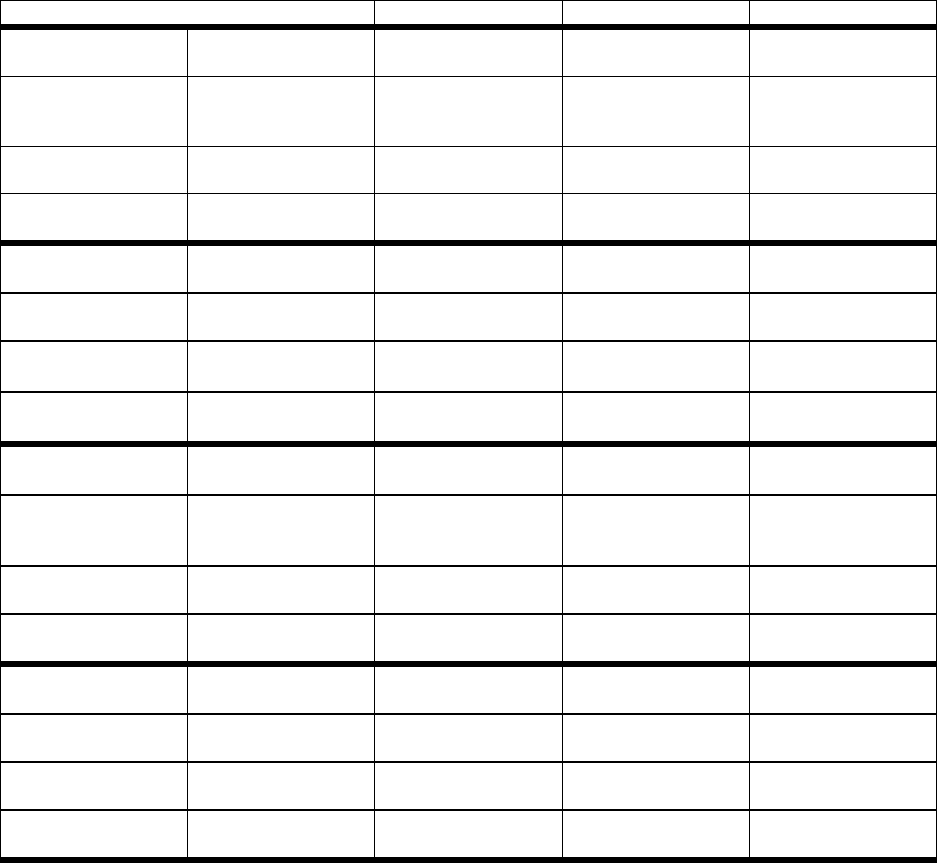
39
Table 7
TLU Scores of Three Groups
GROUP
THE
A/AN
ZERO
A
Mean
0.61
0.37
0.10
(residence less than
1 year)
Median
0.58
0.34
0.07
Std. Deviation
0.20
0.22
0.11
N
12.00
12.00
12.00
B
Mean
0.70
0.37
0.24
(1-3 years)
Median
0.81
0.33
0.14
Std. Deviation
0.21
0.20
0.30
N
11.00
11.00
11.00
C
Mean
0.70
0.39
0.12
(more than 3 years
of residence)
Median
0.76
0.38
0.08
Std. Deviation
0.15
0.25
0.14
N
12
12
12
TOTAL
Mean
0.68
0.37
0.10
Median
0.72
0.33
0.09
Std. Deviation
0.19
0.22
0.22
N
35
35
35
The results show all three groups show a similar pattern in their article use. They all
demonstrated the highest TLU score with the article the. The average TLU score of all the
participants for the article the is 0.68. The article a/an got the second highest score from all three
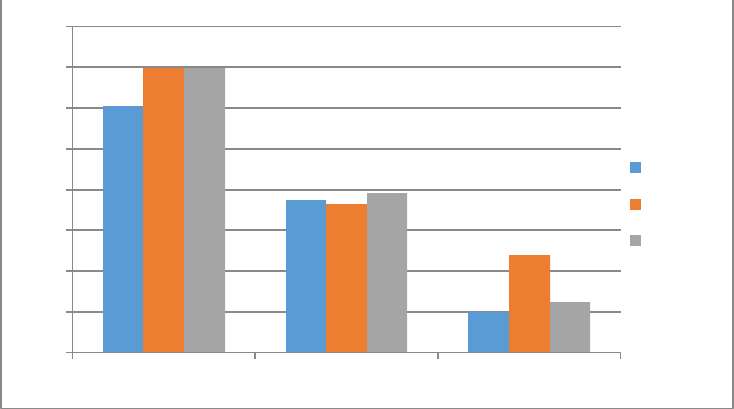
40
groups, with the average TLU score of 0.37. All three groups had the lowest TLU score for the
zero article usage.
One of the purposes of this research was to see if there is an accuracy order that can be
shown in Korean English learners’ English article use. Figure 1 illustrates that all three groups
scored the highest with the, second highest with a/an, and the lowest with zero article. This
suggests that Korean English learners have the most difficulty with using the zero article among
the three articles and the is the easiest article for Korean learners to learn compared to other
articles. Therefore, based on the results we conclude that Korean learners follow the accuracy
pattern of the → a/an → zero article in descending order of proficiency.
Figure 1
Three Groups’ TLU Scores for the, a/an, and zero article
This result coincides with an accuracy pattern that Haiyan and Lianrui (2010) found with
Chinese English learners. After conducting research on English article use for three groups of
learners with various English levels, they proposed that learners acquire the first, a/an next, and
zero article last. Earlier in Yamada and Matsuura’s (1982) study, Japanese English learners
0.00
0.10
0.20
0.30
0.40
0.50
0.60
0.70
0.80
the a/an zero
Group A
Group B
Group C
41
showed a similar pattern. According to Yamada (1982), their intermediate group followed the →
a/an → Ø and the advanced group showed the → Ø → a/an. The seems like the easiest among
the three articles for Korean, Chinese, and Japanese English learners. Chinese, Japanese, and
Korean have no article system as English does. Therefore, for English learners from China,
Japan, or Korea, English articles are a new category, which is high in the Hierarchy of Difficulty
which Gass (2013) proposed.
Next, the relationship between the length of residence in an English-speaking country and
TLU scores were examined to answer the second research question: How does exposure to
English speaking surroundings influence English article acquisition by Korean students?
Table 7 shows TLU scores for each group and the composite TLU scores for all
participants. When we compare the three groups’ TLU scores for each article usage, Group A’s
TLU scores for the and zero article are lower than the other two groups’ TLU scores for the
same articles. Otherwise, the results do not demonstrate significant TLU score differences
among my three research groups that have each resided in an English-speaking country of
various time.
Before rounding, Group B’s TLU score for the article the was 0.698448873522187,
which is higher than Group C’s TLU score for the 0.698178379610194. Group B’s TLU score
for zero article is higher by 0.12 compared to Group C’s. There is not a significant difference
between all three groups’ TLU scores.

42
Table 8
ANOVA Test Results
ANOVA
Sum of
Squares
df
Mean
Squares
F
Sig.
TLU
Between
Groups
0.68
2
0.034
0.93
0.405
(the)
Within
Groups
1.174
32
0.037
Total
1.243
34
TLU
Between
Groups
0.004
2
0.002
0.043
0.958
(a/an)
Within
Groups
1.608
32
0.05
Total
1.613
34
0.05
TLU
Between
Groups
0.124
2
0.062
1.581
0.221
(zero article)
Within
Groups
1.257
32
0.039
Total
1.382
34
To calculate a relationship between the length of stay in English-speaking countries and
TLU score for each article more precisely, a one-way ANOVA test was conducted. The results
with this sample group indicate that the length of stay in English-speaking countries does not
have a noteworthy effect on English article accuracy. As exposed in Table 8, analysis of these
three groups did not show any statistical significance of TLU scores for all three articles:
TLU(the), F=0.93, p=0.405; TLU(a/an), F=0.043, p=0.958; TLU(zero article), F=1.581,
p=0.221.

43
Schönenberger (2014) investigated Russian English learners, whose native language does
not have an article system, to examine how prior English study can affect Russian English
learners’ article use. There were 4 years of English study gap between two groups of learners
and their performance on an English article proficiency test did not show significant difference.
Although, the Korean participants for this research were grouped based on their exposure
in English-speaking countries rather than prior English study, staying in English speaking
countries for academic purpose is considered a very intense English-learning experience. The
English study time difference between the two Russian groups was 4 years. Schönenberger
(2014) insisted that knowledge of English articles rather than the length of English study had a
more important role on the students’ performance in her research.
Table 9
Average Stay in English Speaking Countries
Group A
N: 12
Less than 1 year
Average Stay: 8.83 months
Group B
N: 11
Between 1-3 years
Average Stay: 22.55 months
Group C
N: 12
More than 3 years
Average Stay: 53.5 months
As shown in Table 9, the average time differences among my research groups were about
14 months between Group A and B, 21 months between Group B and C, and 44.67 months
between Groups A and C. These time gaps might not be enough to make significant difference
on the subjects’ proficiency in article use. Also, the number of participants may not be sufficient
to make a reliable conclusion.
The results of this study do not provide significant evidence that the length of residence
in English speaking countries affects English article use. Further research is required about the

44
relationship between exposure to English speaking surroundings and English article use. Enough
time gaps spent in English speaking countries, the purpose of stay, or the age of the participants
during the residence in English speaking countries might need to be controlled for more rigorous
study.
Article Use in Definite and Indefinite
Contexts
To find out Korean English learners’ article use in definite and indefinite context, articles
were counted based on definite and indefinite contexts respectively. The following tables, Table
10 and Table 11, show the number of each article incidences counted from all 35 participants’
speeches. The numbers of articles were calculated in percentage for analysis.
Table 10
Article Use in Indefinite Context
Correct a
Incorrect the
Incorrect zero article
Total
Indefinite Context
(target a)
132
293
196
621
21.26%
47.18%
31.56%
100.00%
Table 11
Article Use in Definite Context
Incorrect a
Correct the
Incorrect zero article
Total
Definite Context
(target the)
95
571
163
829
11.46%
68.88%
19.66%
100.00%
There were 621 indefinite contexts from the speech of all participants where an indefinite
article a/an was required and 829 definite contexts in which subjects must put the definite article
45
the in front of a noun. Since I counted only common nouns that needed either an indefinite or
definite article in front of the nouns, all the zero articles counted in the above table are
considered as incorrect use.
As aligned with the accuracy order that we discussed in the previous page, the percentage
of correct use of the in definite contexts is higher than the percentage of correct use of a/an in
indefinite contexts. Correct the in definite contexts was 68.88% while correct a/an in indefinite
contexts was only 21.26%. Subjects show comparatively more accurate article use in definite
contexts than in indefinite contexts. To Korean English learners, it is more difficult to use
articles correctly in indefinite contexts compared to definite contexts.
The above results allow me to answer my third research question: Is there any difference
of accuracy in article use between definite contexts and indefinite contexts? The findings from
this study demonstrate that Korean English learners show higher accuracy with definite contexts
than with indefinite contexts in their English article use.
This is consistent with Zdorenko and Paradis’s (2008) study in which they investigated
two groups of children, one group whose native language had an article system and the other
group whose native language did not. They stated that both groups demonstrated more accurate
article use with definite context than with indefinite context (Zdorenko & Paradis, 2008). It is
suggested that English learners acquire the before other articles.
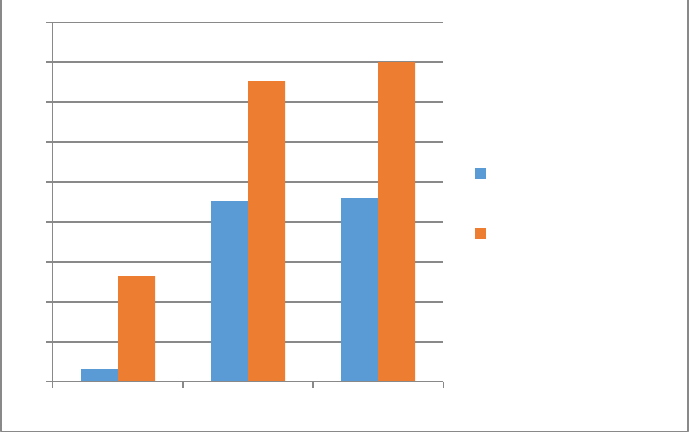
46
Figure 2
Correct Use of a/an in Indefinite Context and the in Definite Contexts
Figure 2 shows the three groups’ correct use of a/an in indefinite contexts and correct use
of the in definite contexts. All three groups utilized the more accurately. Group C students, who
have resided in an English-speaking country for more than 3 years, show high accuracy with
definite articles and score 80%. Group A students, who have stayed in an English-speaking
country less than one year, demonstrated poor proficiency with using a/an in indefinite contexts
with a score of only 3.09%.
Next, misuses of the or zero article in indefinite contexts and a/an or zero article in
definite contexts were analyzed to find out which article utilization mistake Korean learners are
more prone to make. The results show that in indefinite contexts, misuse of the is more common
than the misuse of zero article. In indefinite contexts, incorrect incidence of the was 47.18%
whereas the incorrect incidence of zero article was 31.56%.
0
10
20
30
40
50
60
70
80
90
Group A Group B Group C
correct a in indefinite
context (%)
correct the in definite
context (%)
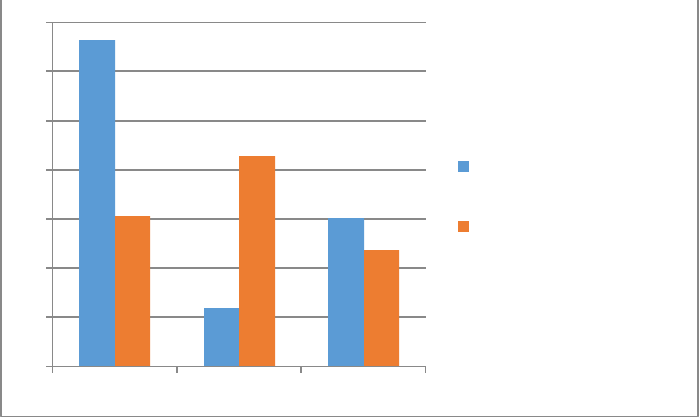
47
Figure 3
Incorrect Use of the and zero article in Indefinite Contexts
Figure 3 presents all three groups’ article misuse of the and zero article in indefinite
contexts. The percentage of Group A’s incorrect use of the in indefinite contexts is 66.29%,
which is very high. Considering Group A’s correct use of the in definite contexts was only
26.57%, this group of students seem to fluctuate between the and a/an when they speak English.
Group B students utilized zero article incorrectly 42.86% of their opportunities, which was far
more than the percentage of the, at only 11.9% in indefinite contexts. However, the other groups
used the more than zero article. In general, misuse of the is more common than misuse of zero
article in indefinite contexts.
0
10
20
30
40
50
60
70
Group A Group B Group C
incorrect the in indefinite
context (%)
incorrect zero article in
indefinite context (%)
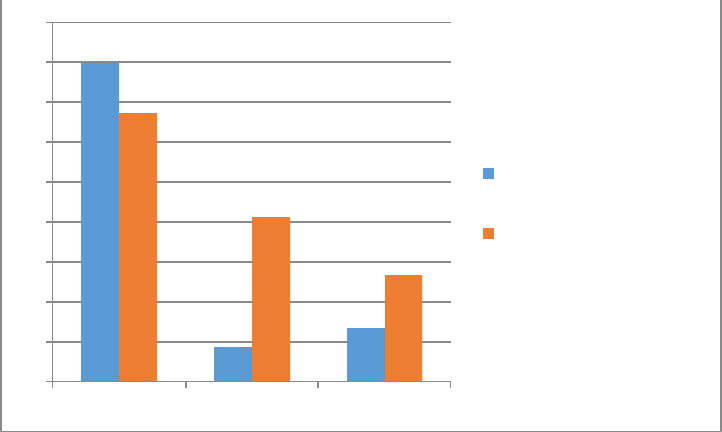
48
Figure 4
Incorrect Use of a/an and zero article in Definite Contexts
The three groups’ misuse of articles a/an and zero article in definite contexts were
analyzed in Figure 4. Group A demonstrated a high percentage of article misuse in definite
contexts with a/an (39.86%) and zero article (33.57%). Taking into consideration the percentage
of Group A’s use of the in definite contexts was only 26.57%, they used a/an or zero article
more than the in definite contexts. Except Group A, all other groups chose to use zero article
more than a/an in definite contexts, which means when they made an article mistake in definite
contexts, they omitted an article more frequently than they used a/an.
0
5
10
15
20
25
30
35
40
45
Group A Group B Group C
incorrect a/an in definite
context (%)
incorrect zero article in
definite context (%)
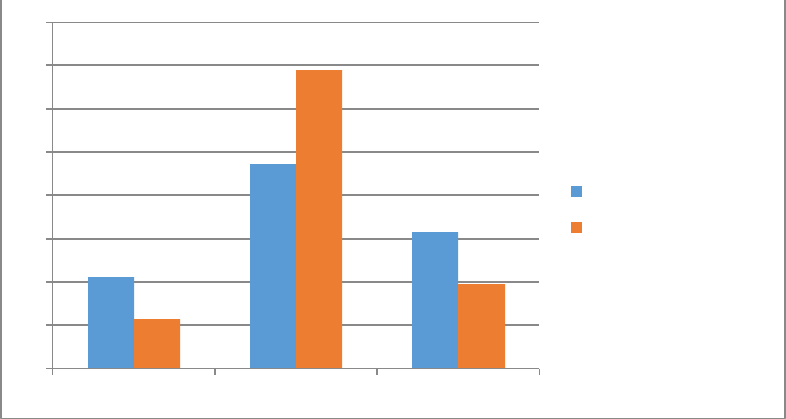
49
Figure 5
Each Article Use of Total Group in Indefinite and Definite Contexts
Figure 5 demonstrates the percentage of each article use from all 35 students’ speeches.
It is interesting that in indefinite contexts where a/an is necessary, participants chose incorrectly
to use the or zero article far more frequently than a/an. On the other hand, in definite contexts,
students used the significantly more than a/an or zero article showing high accuracy with using
the article the. A/an was the article that learners used the least in definite contexts. Therefore,
both in definite and indefinite contexts, participants used the the most and a/an the least.
The last research question asked what type of errors Koreans make between a/an and
zero article in definite contexts where the is required and between the and zero article in
indefinite contexts where a/an is required. As explained in the above discussions, participants
misused the more than zero article in indefinite contexts, while they misused zero article more
than a/an in definite contexts. In indefinite contexts, where a/an is required, students chose to
the, at 47.18%, far more than a/an at 21.26%. It seems that not only Korean English learners
0
10
20
30
40
50
60
70
80
a the zero article
Indefinite Context (%)
Definite Context (%)
50
show high accuracy with the when it is required but they also show high inaccuracy with the
when it is not required.
51
Chapter 5: Conclusions and Pedagogical Implications
In order to investigate English article use by Korean English learners, an oral translation
assignment was given to 35 Korean students studying at a university in the upper Midwest of the
United States. Participants were expected to demonstrate their English article proficiency by
orally translating a short Korean story into English. Their translation was recorded, transcribed,
and analyzed for the research.
To discover if there is an accuracy order in Korean English learners’ article use among
the, a/an, and zero article, each article in the participants’ speech was counted and calculated
using TLU (Target-Like-Use). The results show a decreasing accuracy order with using the →
a/an → zero article (most proficient → least proficient) which aligns with Yamada and
Matsuura’s (1982) study involving Japanese English learners and Haiyan and Lianrui’s study
(2010) involving Chinese English learners. This suggests that Korean English learners master
the article the first while zero article is the most challenging to them.
I also intended to discover a causal relationship, if any, between the length of exposure to
English speaking surroundings and accuracy of English article use. It was not shown through this
research that the length of stay in an English-speaking country had positive effect on correct
English article use by Korean learners. The difference in the three groups’ accuracy for each
article use was not significant. This might be because the gap in each group’s length of stay was
not large enough or the sample size was not sufficiently large. The participants’ age when they
were immersed in English speaking surroundings or the purpose of residence in an English-
speaking country could be critical factors that impact the results. Also, the English proficiency
52
of each participant should be controlled in the future along with the length of stay in English-
speaking countries for further research.
Next, it was analyzed with which contexts, between definite and indefinite contexts,
Korean English learners are more prone to show correct article use. As participants showed
more accurate use with the (average TLU score of 0.68) compared to a/an (average TLU 0.37),
the analysis of article use in definite and indefinite contexts demonstrated that for Korean
students, article use in indefinite contexts is more challenging than in definite contexts. For all
research participants, the percentage of correct the in definite contexts was 68.88%, whereas the
percentage of correct a/an in indefinite contexts was only 21.26%. Korean English learners, as
suggested in Zdorenko and Paradis’s (2008) study, seem to master the ability to use the correctly
before other articles.
Finally, it was investigated what types of errors Korean English learners are more
inclined to make in definite contexts where the is required and in indefinite contexts where a/an
is required. The analysis of article misuse in definite and indefinite contexts demonstrates that
students misused the more than zero article in indefinite contexts, while they misused zero
article more than a/an in definite contexts.
The results show that in both definite and indefinite contexts, participants used the article
the the most and a/an the least. It is noteworthy that students utilized the most frequently, not
only in definite contexts but also in indefinite contexts in which using the is erroneous. Further
study is required to find out whether the high accuracy rate with the is simply because students
use the most frequently without knowledge of definiteness or indefiniteness.
53
It was discussed earlier that Korean language does not have an article system and
Koreans rely on other methods such as demonstratives, postpositions, and contexts to express
definiteness. It is assumed that the lack of article system in their native language causes Korean
students to struggle with correct article use. In this study, incorrect article use by Korean
students is shown in various ways such as omitting an article (zero article) when either a/an or
the is required, using a/an for the or the for a/an, or overusing the. This supports Ellis’s (1997)
statement that interlingual/intralingual transfer occurs when someone’s native language does not
have a certain feature of a target language.
The results of this study provide ESL/EFL educators teaching Korean students some
insight into their students’ English learning. The accuracy order that all 35 participants
demonstrated with English article use illustrates they master the article the before other articles
while zero article may be the last one they master. ESL/EFL educators should understand that
students will have more difficulty mastering one article compared to another.
The students participating in this research showed higher accuracy with using the over
the other articles. However, this might lead them to overuse the in indefinite contexts or contexts
where the is not required. As the analysis of article misuse in definite and indefinite contexts
demonstrated, students showed good performance with using the correctly while also overusing
the often in indefinite contexts. Korean English learners ought to be taught the difference
between definite and indefinite contexts to have a clearer understanding of when to use the or
a/an.
Korean students should be aware of the difference between English and Korean regarding
how definiteness and indefiniteness is expressed. Although the English article system is initially
54
unfamiliar to Korean students, learning how definiteness and indefiniteness is communicated in
their native language might help them to approach the English article system semantically.
Eventually, foreign language education should ideally be intertwined with better education of his
or her own native language.
Limitations and Further Research
This study has some limitations. Because of the restriction of recruiting only Korean
participants at only one local university, some important factors such as sex or major that might
affect the research results were not controlled. Also, the number of participants (35) may not
have been large enough to draw conclusions on the relationship between the length of stay in
English speaking countries and accurate article use. The difference of average lengths of stay
between groups; about 14 months between Group A and B, 21 months between Group B and C,
and 44.7 months between Groups A and C, may have not been enough to demonstrate statistical
difference in correct article use among groups.
Some factors to consider in the future for a more rigorous study may include the
following: a larger sample group, greater difference in average length of stay in English speaking
countries, the age of the participants when they arrived in an English-speaking country,
proportional group of male and female participants, stratification by choice of major, and how to
better control for the English proficiency of each participant.
This research was designed to investigate Korean students’ article use particularly in an
oral context. It is possible that the students’ proficiency with article use differs when they speak
compared to when they write. Even when English learners speak English, they spend less time
second-guessing their grammar, so our participants may have made mistakes with grammar that
55
they are otherwise proficient in. A study with a written translation task could be performed in
the future to provide further information about Korean English learners’ English article use.
Also, the translation task which was used in this study to elicit Korean students’ article
use can be used for other ESL research with different intents such as investigating Chinese
students’ use of English tenses or Spanish-speaking students’ use of English possessive -s. Other
ESL researchers should expect profitable research answers to their varieties of questions,
whether they use an oral or written translation activity.
56
References
Bailey, N., Madden, C., & Krashen, S. D. (1974). Is there a “natural sequence” in adult second
language learning? Language Learning, 24(2), 235-243.
Brown, R. (1973). A first language: The early stages. Harvard University Press.
Celce-Murcia, M., & Larsen-Freeman, D. (1999). The grammar book: An ESL/EFL teacher's
course. Boston, MA: Heinle & Heinle.
Dulay, H. C., & Burt, M. K. (1974). Natural sequences in child second language acquisition.
Language Learning, 24(1), 37-53.
Ellis, R. (1997). Second language acquisition. Oxford, NY: Oxford University Press.
Gass, S. M. (2013). Second language acquisition: An introductory course. New York:
Routledge.
Gee, J. P. (2011). An introduction to discourse analysis: Theory and method. New York:
Routledge.
Goldschneider, J. M., & DeKeyser, R. M. (2001). Explaining the “natural order of L2 morpheme
acquisition” in English: A meta-analysis of multiple determinants. Language Learning,
51(1), 1-50.
Haiyan, L., & Lianrui, Y. (2010). An investigation of English articles' acquisition by Chinese
learners of English. Chinese Journal of Applied Linguistics (Foreign Language Teaching
& Research Press), 33(3).
Ionin, T., Ko, H., & Wexler, K. (2004). Article semantics in L2 acquisition: The role of
specificity. Language Acquisition, 12(1), 3-69.
57
Ionin, T., Zubizarreta, M. L., & Maldonado, S. B. (2008). Sources of linguistic knowledge in the
second language acquisition of English articles. Lingua, 118(4), 554-576.
Jun, Y. C. (2013). 한국어 명사구의 의미론 (A Semantics for Korean Noun Phrases). Seoul
National University Press.
Kang, A. (2012). Semantic and pragmatic aspects of definiteness in Korean: The case of
demonstrative ‘ku.’ Ms. University of Chicago. (To be presented at WAFL 8, U.
Stuttgart).
Kim, L. K., & Lakshmanan, U. (2009). The processing role of the article choice parameter.
Second language acquisition of articles: Empirical findings and theoretical implications.
Amsterdam: John Benjamins Publishing Co.
Kim, S. I. (2012). 한국어와 영어의 한정성 체계 비교연구 (A study of definiteness in Korean
and English). Seoul Women’s University.
Kim, S. S. (2003), 금도끼 은도끼(Gold Ax and Silver Ax). Samsung Press.
Ko, H., Ionin, T., & Wexler, K. (2009). L2-acquisition of English articles by Korean speakers.
The Handbook of East Asian Psycholinguistics, 3, 286-304.
Laufer, B., & Eliasson, S. (1993). What causes avoidance in L2 learning. Studies in second
language acquisition, 15(1), 35-48.
Lee, C. (1992). Definite/specific and case marking in Korean. Theoretical issues in Korean
linguistics, pp. 325-341.
Luk, Z. P. S., & Shirai, Y. (2009). Is the acquisition order of grammatical morphemes
impervious to L1 knowledge? Evidence from the acquisition of plural- s, articles, and
possessive’s. Language Learning, 59(4), 721-754.
58
Master, P. A. (1996). Systems in English grammar: An introduction for language teachers.
Prentice Hall Regents.
Myers, S. A. (1992). In search of the genuine article, a cross-linguistic investigation of the
development of the English article system in written compositions of adult ESL students.
UMI Dissertation Services.
Park, S. (2013). Testing the interface hypothesis: acquisition of English articles by Korean L2
learners. (In Proceedings of the 12th Generative Approaches to Second Language
Acquisition Conference [pp. 155-161]). Cascadilla Proceedings Project.
Pica, T. (1983). Adult acquisition of English as a second language under different conditions of
exposure. Language Learning, 33(4), 465-497.
Rina (2013, April 16). Re: Folk tales from CESL [Korean Folk Tale]. Message posted to:
http://ceslfolktales.blogspot.com/2013/04/korean-folk-tale.html.
Schönenberger, M. (2014). Article use in L2 English by L1 Russian and L1 German speakers.
ZeitschriftfürSprachwissenschaft, 33(1), 77-105.
Stockwell, R., Bowen, J., & Martin, J. (1965). The grammatical structures of English and
Italian. Chicago: University of Chicago Press. Retrieved October 25, 2002.
Stockwell, R. P. (1965). The grammatical structures of English and Spanish. University of
Chicago Press.
Yamada, J., & Matsuura, N. (1982). The use of the English article among Japanese students.
RELC journal, 13(1), 50-63.
Zdorenko, T., & Paradis, J. (2008). The acquisition of articles in child second language English:
fluctuation, transfer or both? Second Language Research, 24(2), 227-250.
59
Appendix A: The “Gold Ax and Silver Ax” Folk Tale
I designed the research tool using both an English version from a CESL (Center for
English as a Second Language) blog on the internet (Rina 2013) and a Korean version of the
story from Kim’s (2003) story book, “금도끼 은도끼” (Gold Ax and Silver Ax). I followed the
story line from the English version because it was appropriate length for a research tool and used
simple English phrases, which made translation to Korean an easier task. I also adopted key
words from Kim’s (2003) story book such as 산신령 (mountain spirit) and 연못(pond) because
Kim’s (2003) story was written in words that most Koreans were familiar with. In summary, I
combined two versions of one Korean folk tale, simplified them and made my own Korean
version for this research study.
Korean Version of the Folktale
금도끼, 은도끼
옛날에 산신령이 연못에 살았어요. 어느날 저녁에 나무꾼이 연못에 와서 철도끼로
나무를잘랐어요. 그는 연못에 철도끼를 빠뜨리고 말았어요. 그는 다른 도끼가 없었기
때문에 울었어요. 그는 새 도끼를 살 돈이 없었어요.
나무꾼은 연못가에서 울었어요. 바로 그때, 산신령이 나타나서 말했어요. “왜 울고
있느냐?” 나무꾼이 말했어요. “연못에 철도끼를 빠뜨렸어요.” 그러자 산신령은 연못으로
사라졌어요.
그 뒤에 산신령이 은도끼를 들고 나타나서 물었어요. “이것이 네 것이냐?” 나무꾼이
대답했어요. “그것은 제 것이 아닙니다.” 그러자 산신령은 다시 연못으로 들어갔다가
60
금도끼를 들고 나무꾼 앞에 나타났어요. 하지만 이 금도끼는 그의 도끼가 아니었어요.
그래서 산신령은 연못으로 다시 들어갔다가 그의 도끼를 들고 나타났어요. 그제서야
나무꾼은 말했어요. “그것이 제 것 입니다.”
산신령이 말했어요. “너는 거짓말을 하지 않았도다. 그래서 나는 이 세 도끼를 다 네게
주겠다. 너의 도끼, 금도끼 그리고 은도끼까지 주겠다.” 나중에 나무꾼은 많은 돈을 받고
도끼를 팔았어요. 그는 부자가 되었어요.
한 농부가 이 이야기를 들었어요. 그도 금도끼, 은도끼를 갖고 싶었어요. 그래서 농부는
연못으로 가서 일부러 철도끼를 떨어뜨리고는 우는 척을 했어요. 그러자 산신령이 농부
앞에 나타나서 물었어요. “너는 왜 울고 있느냐?” 농부가 대답했어요. “제 도끼를
잃어버렸어요.”
산신령은 연못으로 들어갔다가 금도끼를 들고 나타났어요. 그는 물었지요. “이것이 네
것이냐?” 농부가 대답했어요. “예” 그러자 산신령은 즉시 사라져 버렸어요. 농부는 아무
것도 얻기 못했어요. 심지어 그의 도끼조차도요.
61
Appendix B: English Version of the Folk Tale
Gold Ax and Silver Ax
Once upon a time, a mountain spirit lived in a pond. One night, a woodcutter came to the
pond and cut a tree with an iron ax. He dropped the iron ax in the pond. He cried because he
didn’t have an extra ax. He didn’t have money to buy a new one.
He cried by the pond. At that moment, the mountain spirit appeared and said, “Why are
you crying?” The woodcutter said, “I dropped my iron ax in the pond.” Then, the mountain spirit
disappeared into the pond.
A while later, the mountain spirit showed up with a silver ax and asked, “Is this yours?”
The woodcutter answered, “It’s not mine.” The mountain spirit went back into the pond and then
showed up before the woodcutter with a gold ax. However, this gold ax was not his, so the
mountain spirit went into the pond again and appeared with the iron ax. Only then, the
woodcutter said, “It’s mine.”
The mountain spirit said, “You didn’t lie, so I will give you all three axes, your ax and
the gold and the silver ax.” Later, the woodcutter sold those three axes for a lot of money. He
became a rich person.
A farmer heard this story. He wanted a gold ax and silver ax. So, the farmer went to the
pond and dropped his iron ax deliberately and then he pretended to cry. The mountain spirit
appeared in front of the farmer, and he asked, “Why are you crying?” The farmer answered, “I
lost my ax.”
62
The mountain spirit went into the pond and showed up with a gold ax. He asked, “Is this
yours?” The farmer answered, “Yes”. And then the mountain spirit vanished right away. The
farmer got nothing, not even his ax.
63
Appendix C: Background Questionnaire
1. How old are you?
__________________
2. What is your gender?
1) Female 2) Male
3. What is your educational level?
1) High school diploma
2) Still in university/college (specify your grade by indication one of the below)
a. Freshman b. Sophomore c. Junior d. Senior
3) Bachelor’s Degree
4) Graduate student
5) Master’s Degree
6) Graduate student in Ph.D.
7) Ph.D.
4. In what level of school did you start to learn English?
1) Elementary school
2) Middle school
3) High school
4) University/College
5. How long have you been studying English?
_________________
6. How long have you been in an English-speaking country?
__________________
